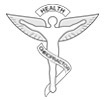



|

|

|
|
|
What Is Chiropractic?Welcome new, veteran and prospective chiropractic patients! Thank you in advance for taking the time to discover chiropractic and its powerful effects on human health. Each year more than 15 million Americans choose chiropractic for safe, natural and effective relief from back pain, neck pain, headaches, extremity pain, poor overall health, low energy levels and much more.
What is Chiropractic?
The Goal of Chiropractic
How Chiropractic Works
As you may already know, the nervous system is the master controller of all living cells, tissues and organs; orchestrating and coordinating all cellular functions. The spinal column encases the nervous system (spinal cord and nerve roots) and is responsible for its protection. Because of this intimate relationship, biomechanical and structural problems in the spinal column can irritate parts of the enclosed nervous system. This irritation can result from noxious inflammatory biochemicals released during tissue injury or may result from direct mechanical pressure. In either case, the functioning of the nervous system is negatively influenced as is the functioning of the cells, tissues and organs which are supplied by the affected nerve(s). The resulting ailment(s) depends on the cells, tissues and organs affected as well as the extent of nervous system compromise. In short, because the body's innate recuperative powers are affected by and integrated through the nervous system, correcting spinal abnormalities which irritate the nervous system can lead to a number of favorable results in patients suffering from various, seemingly non-spinal health conditions. What Chiropractors Do
A vertebral subluxation is a complex of functional and/or structural and/or pathological articular (joint) changes that compromise neural integrity and may influence organ system function and general health. Using a number of unique and highly refined skills, the chiropractor checks the patient's spine for any misalignments, fixations or other abnormalities (vertebral subluxations). If subluxations or other abnormalities are detected, the chiropractor will generally apply a gentle force in a corrective manner to the affected spinal area. Chiropractors use many specialized techniques to identify and treat these spinal abnormalities and optimize overall health. In addition to spinal adjustive techniques, soft tissue techniques such as massage, dietary and nutritional counseling, physical therapies, and lifestyle modification programs are commonly employed. How Chiropractic Differs
When evaluating and treating patients, chiropractors take a holistic approach which includes identifying and correcting the cause(s) of the patient's health ailment. In contrast, the medical approach tends to focus more on the treating the symptoms of a condition rather than focusing primarily on the actual cause(s). Chiropractors believe that correcting the cause of the problem provides significant long-term benefits over only treating the symptoms. The Benefits of Chiropractic
|
||||||||||||||||||||||||||||||||||||||||||||||||||||||||||||||||
|
|
|||||||||||||||||||||||||||||||||||||||||||||||||||||||||||||||||